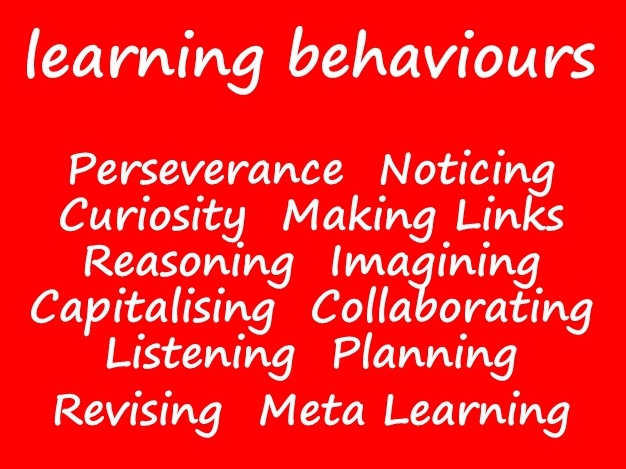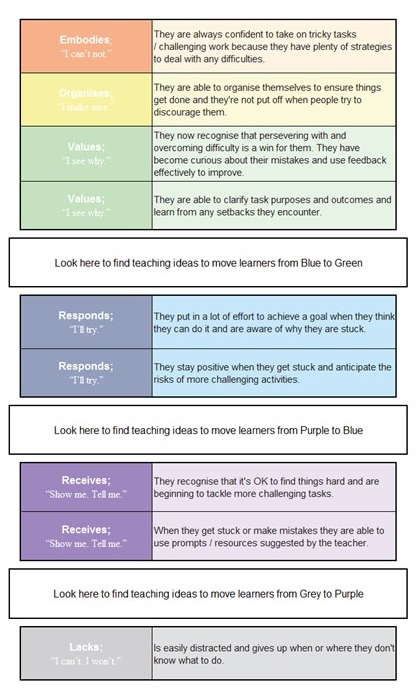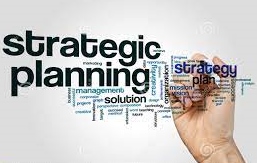Available in both primary and secondary school editions.
Wouldn’t it be wonderful if…
- you had a straightforward way to ease every new teacher into growing the learning power culture of your school
- new teachers could begin that journey even before arriving in the school
- new teachers could quickly put students’ learning behaviours, rather than attainment, front and centre in their approach to improving learning,
- the school had a specially designed resource to accompany and reinforce the school’s own induction programme.
This introductory resource offers teachers new to the school, an insight into the skills and attitudes your students use when learning… and how they can learn to strengthen any student’s development as a learner.
What does it offer new teachers?
We all know it’s difficult to blend in and absorb the culture and practices of a school that’s new to you. And it’s just as true for experienced teachers as it is for new entrants just starting out. Blending into the culture is particularly tricky if the school has an approach to learning that’s somewhat different to what most teachers are familiar with.
This resource offers new teachers a route for easing themselves into growing the learning power culture of the school. It ensures their students aren’t disadvantaged by their initial lack of learning power knowhow and continue developing as learning powered learners.
The online resource offers new teachers;
- information about the power of learning behaviours and how they grow
- guidance on teacher talk, lesson design and classroom cultures designed to help strengthen learning habits
- tools to help them to assess and amend their classroom culture and teaching style
- a tool to enable them to analyse you students’ learning behaviours
- some basic techniques to raise students’ awareness of how they can take control of their learning
- ways to understand and apply teaching approaches needed for dual focused lessons
- tools to explore, estimate and record their students’ growth in learning behaviour
Activities to meet teachers’ needs
Looking through each numbered section will lead new teachers through the basic story of learning power. Deeper content is offered in the toggle boxes that they could return to later.
Each section deals with a key aspect of understanding, introducing and testing the approach.
Part 1 – Three sections look at learning itself. Could be made available prior to starting.
- Section 1 What makes a difference in learning?…introduces and explores the meaning, purpose and attributes of learning power.
- Section 2 Up close and personal with learning…invites teachers to look at themselves and some students through the lens of learning behaviours.
- Section 3 Finding learning characteristics…explains how teachers, and the school, gather evidence to profile students’ learning characters and use this as a basis for selecting appropriate activities. NB Read for information only. Material in this section should be acted on after discussion with the school.
Part 2 – Three sections encourage trying things out. Could be worked through in the first few months.
- Section 4 Shift classroom culture…explores how classroom practice can encourage the growth of learning behaviours.
- Section 5 Start with the basics…explains the first ‘must do’ aspects of learning activities that strengthen learning behaviours.
- Section 6 A catalogue of ideas…offers a range of practical classroom solutions that are directly linked to phases of learning behaviours and blend into your teaching.
Part 3 – A final section shows how to assess for impact. Included for information, Use at end of first year.
- Section 7 What is the impact?…suggests how to assess the impact of your interventions on your classroom culture, students learning and their attainment. This section will be appropriate at the end of your first year
Support for senior leaders
An accompanying online resource outlines the leadership and management issues that will arise from using the ‘Coming on Board’ resource. Content includes:
- advice on how the 7 sections might best be tackled
- before the teacher arrives
- in the initial weeks
- integrating new staff into established teams
- training materials to help leaders introduce ‘The Supple Learning Mind’ and ‘Learning-Friendly Classroom Cultures’ (should you wish to do so).
Support for leaders to contemplate:
- how and when might they find time to support new colleagues to work through these materials;
- whether they need to have the occasional twilight meeting with new staff?
- whether they need, say, an ‘induction afternoon’ to kick start the process?
- whether it might be a good idea to support new colleagues to form their own new Professional Learning Community (if numbers allow);
- and/or whether each new colleague should be assigned an experienced mentor / coach to guide them through translating these materials into practice.
- how they will support new staff in the first half term (6/7 weeks) using the ‘Coming on Board’ materials
- when to offer new staff access to the full blown courses…Phase 1 ‘Playing the Learning Power Game’ and or Phase 2 ‘The Professional Learning Power Game‘
Costs and benefits
The ‘Coming on Board’ resource is a useful and welcome part of the whole Building Better Learners programme and will benefit the school for years to come.
Because this resource has only just become available we’ve talked to a couple of schools and used their experience to imagine this cost benefit analysis. The schools have been successfully involved in learning power programmes for some time but until now they had stable staff teams. One school has had a churn of 15 staff across the curriculum, while the other had two new members of staff covering key age groups. Hence their emphasis was on ensuring that new staff understood the philosophy and research behind the approach but were also able to pick up its key features quickly so that students wouldn’t detect a difference in approach. Ultimately they didn’t want to see any students falling back into weaker learning habits but rather being helped to move on to stronger ones.







Comments are closed.